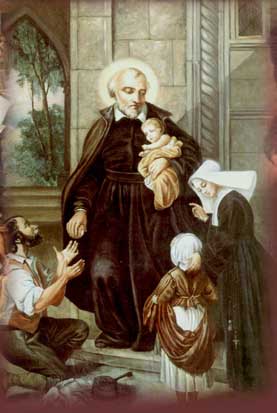
Canon Triest named his congregation ‘Hospital Brothers of Saint Vincent’, and he made this French saint their patron saint. Even today, Vincent de Paul is still more than a source of inspiration for the Brothers of Charity.
Born in 1581 in Pouy, France, this farmer’s son was able to get an education thanks to the support of a lawyer. At the age of 19, he was ordained a priest. Vincent spent his first few years searching for financial resources to support his family. Following a rather adventurous 10-year period, he started to see the error of his ways, and it became clear to him that, as a priest, he had a mission to fulfil. People such as Pierre de Bérulle, Francis de Sales, and the Gondi family put him on a new path: the path of caring for the poor, both spiritually and materially.


